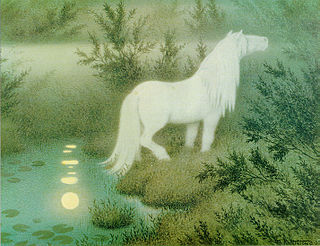
A fantasy world is a world created for/from fictional media, such as literature, film or games. Typical fantasy worlds involve magic or magical abilities, nonexistent technology and sometimes, either a historical or futuristic theme. Some worlds may be a parallel world connected to Earth via magical portals or items ; an imaginary universe hidden within ours ; a fictional Earth set in the remote past or future ; an alternative version of our History ; or an entirely independent world set in another part of the universe.
Genre fiction, also known as popular fiction, is a term used in the book-trade for fictional works written with the intent of fitting into a specific literary genre, in order to appeal to readers and fans already familiar with that genre.

Eric Rücker Eddison, CB, CMG was an English civil servant and author, writing epic fantasy novels under the name E. R. Eddison. His notable works include The Worm Ouroboros (1922) and the Zimiamvian Trilogy (1935–1958).

Linwood Vrooman Carter was an American author of science fiction and fantasy, as well as an editor, poet and critic. He usually wrote as Lin Carter; known pseudonyms include H. P. Lowcraft and Grail Undwin. He is best known for his work in the 1970s as editor of the Ballantine Adult Fantasy series, which introduced readers to many overlooked classics of the fantasy genre.

Fantasy literature is literature set in an imaginary universe, often but not always without any locations, events, or people from the real world. Magic, the supernatural and magical creatures are common in many of these imaginary worlds. Fantasy literature may be directed at both children and adults.
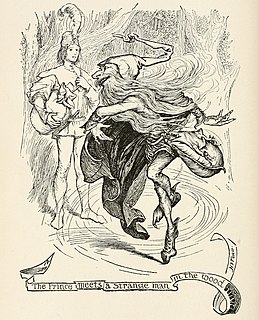
Elements of the supernatural and the fantastic were an element of literature from its beginning. The modern genre is distinguished from tales and folklore which contain fantastic elements, first by the acknowledged fictitious nature of the work, and second by the naming of an author. Works in which the marvels were not necessarily believed, or only half-believed, such as the European romances of chivalry and the tales of the Arabian Nights, slowly evolved into works with such traits. Authors like George MacDonald created the first explicitly fantastic works.

The Ballantine Adult Fantasy series was an imprint of American publisher Ballantine Books. Launched in 1969, the series reissued a number of works of fantasy literature which were out of print or dispersed in back issues of pulp magazines, in cheap paperback form—including works by authors such as James Branch Cabell, Lord Dunsany, Ernest Bramah, Hope Mirrlees, and William Morris. The series lasted until 1974.
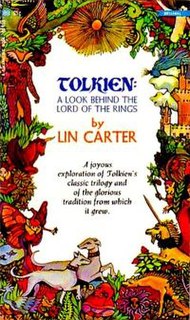
Tolkien: A Look Behind "The Lord of the Rings" is a study of the works of J. R. R. Tolkien written by Lin Carter. It was first published in paperback by Ballantine Books in March 1969 and reprinted in April 1969, April 1970, July 1971, July 1972, February 1973, July 1973, June 1975 and November 1977, after which it went out of print for over twenty-five years. The book has been translated into French, Japanese and Polish. A new edition updated by Adam Roberts was published by Gollancz in August 2003; it constituted both the first British edition and first hardcover edition. The first American hardcover edition was published by Tor Books in 2004.

New Worlds for Old is an anthology of fantasy short stories, edited by American writer Lin Carter. It was first published in paperback by Ballantine Books in September 1971 as the thirty-fifth volume of its Ballantine Adult Fantasy series. It was the fourth such anthology assembled by Carter for the series.

Golden Cities, Far is an anthology of fantasy short stories, edited by American writer Lin Carter. It was first published in paperback by Ballantine Books in October 1970 as the twenty-second volume of its Ballantine Adult Fantasy series. It was the third such anthology assembled by Carter for the series.

Great Short Novels of Adult Fantasy I is an anthology of fantasy novellas, edited by American writer Lin Carter. It was first published in paperback by Ballantine Books in September, 1972 as the fifty-second volume of its Ballantine Adult Fantasy series. It was the eighth such anthology assembled by Carter for the series.

Dragons, Elves, and Heroes is an American anthology of fantasy short stories, edited by American writer Lin Carter. It was first published in paperback by Ballantine Books in October 1969 as the sixth volume of its Ballantine Adult Fantasy series. It was the first such anthology assembled by Carter for the series, issued simultaneously with the second, The Young Magicians.
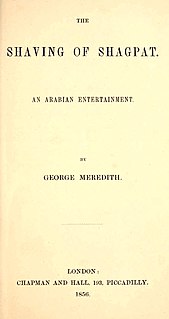
The Shaving of Shagpat: An Arabian Entertainment is a fantasy novel by English writer George Meredith. It was first published in hardcover by Chapman and Hall in 1856, and there have been numerous editions since. Its importance in the history of fantasy literature was recognized by its reissuing by Ballantine Books as the seventeenth volume of the Ballantine Adult Fantasy series in July 1970. The Ballantine edition includes an introduction by Lin Carter.

Khaled: A Tale of Arabia is a fantasy novel by F. Marion Crawford. It was first published in hardcover by Macmillan and Co. in 1891; its first paperback edition was issued by Ballantine Books as the thirty-ninth volume of the Ballantine Adult Fantasy series in December, 1971. The Ballantine edition includes an introduction by Lin Carter.

Imaginary Worlds: the Art of Fantasy is a study of the modern literary fantasy genre written by Lin Carter. It was first published in paperback by Ballantine Books in June, 1973 as the fifty-eighth volume of its Ballantine Adult Fantasy series; it was the only nonfiction entry in the series. The book was among the earliest full-length critical works devoted to fantasy writers and the history of fantasy. It was the third of three such studies by Carter, being preceded by Tolkien: A Look Behind "The Lord of the Rings" (1969) and Lovecraft: A Look Behind the "Cthulhu Mythos" (1972). These works, together with his editorial guidance of the Ballantine Adult Fantasy series, established Carter as an authority on the genre.
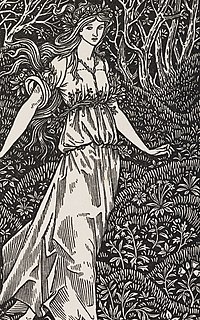
The Wood Beyond the World is a fantasy novel by William Morris, perhaps the first modern fantasy writer to unite an imaginary world with the element of the supernatural, and thus the precursor of much of present-day fantasy literature. It was first published in hardcover by Morris's Kelmscott Press, in 1894. The book's importance in the history of fantasy literature was recognized by its republication by Ballantine Books as the third volume of the Ballantine Adult Fantasy series in July, 1969. The Ballantine edition includes an introduction by Lin Carter.
The Water of the Wondrous Isles is a 1897 fantasy novel by British author William Morris.

The Roots of the Mountains: Wherein is Told Somewhat of the Lives of the Men of Burgdale, Their Friends, Their Neighbors, Their Foemen, and Their Fellows in Arms is a fantasy romance novel by William Morris, perhaps the first modern fantasy writer to unite an imaginary world with an element of the supernatural, and thus the precursor of much of present-day fantasy literature. It was first published in hardcover by Reeves and Turner in 1889. Its importance in the history of fantasy literature was recognized by its republication by the Newcastle Publishing Company as the nineteenth volume of the Newcastle Forgotten Fantasy Library in April, 1979.

J. R. R. Tolkien's maps, depicting his fictional Middle-earth and other places in his legendarium, helped him with plot development, guides the reader through his often complex stories, and contributes to the impression of depth in his writings.

The type of romance considered here is mainly the genre of novel defined by the novelist Walter Scott as "a fictitious narrative in prose or verse; the interest of which turns upon marvellous and uncommon incidents", in contrast to mainstream novels which realistically depict the state of a society. These works frequently, but not exclusively, take the form of the historical novel. Scott's novels are also frequently described as historical romances, and Northrop Frye suggested "the general principle that most 'historical novels' are romances". Scott describes romance as a "kindred term", and many European languages do not distinguish between romance and novel: "a novel is le roman, der Roman, il romanzo".

















